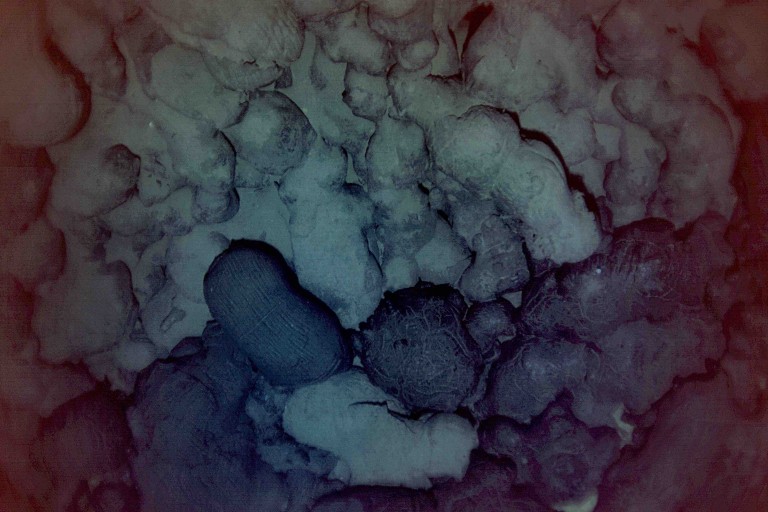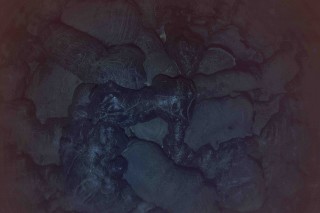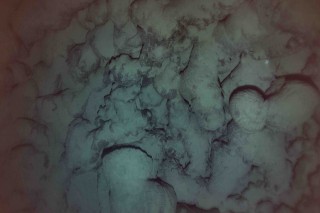
One of the joys of exploration is getting surprised. And boy, were we surprised when we found a lava flow on the seafloor that looks like it could have erupted yesterday!

It is right in the area where we found big plumes and the most intense chemical anomalies during the last CTD tow-yo on what we are calling “Segment 5” of the Mariana Back-Arc. After the CTD, we decided the next step should be to make a dive there with the Sentry AUV. We picked the part of the segment that had evidence for low-temperature venting, thinking that might be most conducive for the chemosynthetic biological communities that we are looking for. So we planned a Sentry dive that first included mapping the seafloor with its multibeam sonar at an altitude of 60 m, followed by a photographic survey of a smaller area at only 5 m above the bottom. The photo survey was centered where the highest chemical anomalies were found during the CTD tow-yo.
Sentry AUV Photographs a Recent Eruption

We expected to see photos of a lot of old lava flows – the spreading rate in the Mariana back-arc here is relatively low, after all, so eruptions should be few and far between. If we were lucky, maybe we would also see some photos of chemosynthetic animals like snails and mussels living around seafloor hot springs. Instead, the photos revealed a brand new lava flow that has clearly been erupted very recently. How do we know? Newly erupted lava is very dark and shiny, because it is covered by a glassy crust that forms when it is quenched by cold seawater. In contrast, the older seafloor is covered by fine sediment that rains down continuously from the upper ocean at a slow but steady rate, at perhaps 1 cm per 1000 years. The longer since the last eruption, the more sediment has accumulated. There is no visible sediment on the new lava flow here, and by comparison with other historical deep-sea eruptions we have studied, it looks like this one was erupted within the last year, perhaps only months ago. On the other hand, we know the eruption is now over because the levels of hydrogen we measured in our CTD water samples was low; if it was still erupting they would have been much higher.
The first image in the upper-right shows contact between old and young lava formations.
The second shows young lava, compared to “middle-age” lava in the third.
Below you can see old lava, almost completely covered in sedimentation:
Risk and Reward in Exploration
Is the venting we saw on this segment during the last CTD tow-yo related to the recent volcanic eruption? In other words, are the big plumes we saw part of the eruption aftermath? We are debating this amongst ourselves on the ship, but generally high-temperature hydrothermal vents are longer-lived that individual eruptions, so the best guess is that venting probably existed on this segment before the eruption occurred. Still it could have been rejuvenated. We plan to return to “Segment 5” later in the cruise for at least one more Sentry AUV dive, but for now we are continuing onward to explore the next segment to the north,“Segment 6.”
This whole experience reminds us that “Chance favors the prepared mind,” as Louis Pasteur stated. We never expected to find a recent eruption like this in the Mariana Back-Arc. We would never know this had happened if we weren’t out here with the right tools to find it. Suddenly we have the rare opportunity to learn about a very infrequent and usually unwitnessed process that is part of how the earth interacts with the ocean. And now we will be able to return here next year with an ROV to sample the lavas, search for new vents, and for vent animals that may have colonized these new lava flows by then. As ocean explorers we are always expecting the unexpected. But we were all surprised by this discovery and are excited for what might come next!

